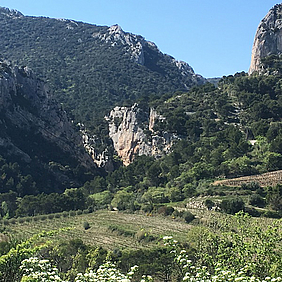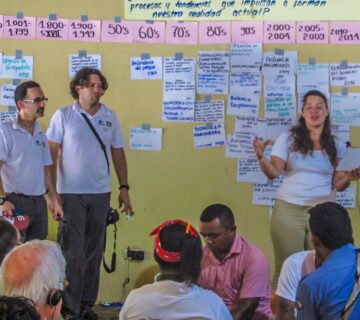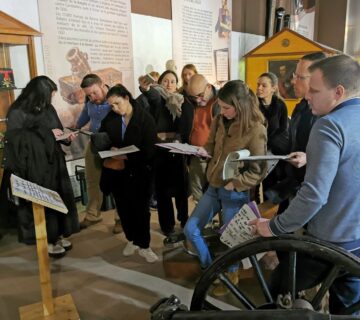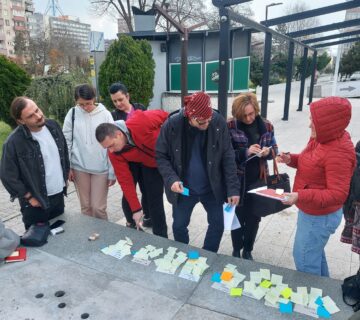An IE/ Europarc Federation workshop, in Kőszeg, tackled the tricky issue of how nature affects our identity. It focused on our relationship with the landscape, both good and bad, and the challenges for interpretation.
Irish comedian, Dave Allen, once said that Ireland is the best place in the world for directions. People will say, ‘Well, I wouldn’t start from here if I were you’.
The notion of home, returning home, is part of our identities. Many no doubt felt it returning from the IE Conference in Kőszeg when cresting the brow of a hill, taking that motorway exit, passing that pub, or catching the scent of a familiar salty sea breeze.
Our identity is chiefly local (e.g. we are Catalan or Scottish), then national (Spanish, British, French, German, Hungarian, etc.), but our European identity is far more diluted. Perhaps, that is because it is difficult to grasp or describe a sense of belonging compared to the familiar view from a bedroom window or the feeling you get when you sit down to your favourite home-cooked meal. I’ve only ever felt European in China or the parts of the United States, far from home, where cultures are so different. Of course, identity can be even more accentuated close-up, for communities in enclosed Austrian valleys, remote islands or highlands, but our environment clearly shapes our sense of identity (and where we call home).
At Kőszeg, the theme of ‘heritage and identity’ framed a workshop Run by Thorsten Ludwig (IE Managing Director), Carol Ritchie (Director of Europarc) and Valya Stergioti (IE Training Coordinator) as part of the European Year of Cultural Heritage. It identified and discussed such issues as the merits (or not) of strong relationships with the landscape, isolation, adaptability and rapid change, urban-rural divides, ‘incomers’ and changing values.
It got me thinking that, in an increasingly divisive society, we can still be proud of our local heritage. After all, it’s what shapes our accents, attitudes and behaviour, whether it’s ignoring queues, the heinous crime of wearing socks with sandals or automatically reaching for the salt to put on your dinner! But there’s a thin line between cultural diversity and conflict. Interpretation has a key role to celebrate specifics but also to widen perspectives, relativise and improve understanding. It’s the ‘glue’, if you like, and this thought-provoking workshop pinpointed some cases of strong ties between landscape and identity while also stressing tensions that interpretation should address to eventually tease standpoints out into, dare I say it, a European perspective.
Taking part in this discussion as a Scot living in the South of France, I’m not sure if I can yet call where I currently live ‘home’. Sure, the landscape is impressive, but it doesn’t ‘speak’ to me. However, my continued travels are helping a blueprint of ‘home’ take shape in my head and when I find most of those components in one place, I’ll know. It might not necessarily be in Scotland or France, but feeling a sense of belonging is key, no matter where home ends up being, in Europe or not.
Sandy Colvine is a freelance translator and interpretive guide trainer. He is Interpret Europe’s Marketing Coordinator and a member of IE’s Training Team while also currently studying interpretation at the University of the Highlands and Islands, in Scotland, UK. He lives near Avignon in France and can be contacted at: sandy.colvine@interpret-europe.net
To cite this article:
Colvine, (2018) ‘Home is where the heart is’. In Interpret Europe Newsletter 1-2018, 4-5.
Available online:
www.interpret-europe.net/fileadmin/Documents/publications/Newsletters/ie-newsletter_2018-1_spring.pdf




